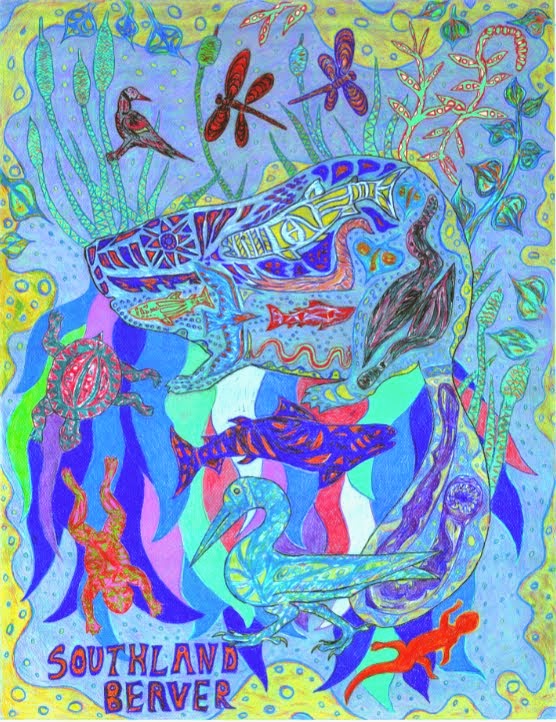So it has been a week since PBS premiered Leave it to Beavers and as you may know the show was a resounding success. I personally thought the show did a great job of distilling all the different strands of knowledge, controversy, and potential that go with beavers in today's world. The personality driven stories of beaver rescues and rehabilitation were well done and well received. The whimpering cries of infant beavers, very child-like, will doubtless drive up interest and passion for beaver based on the cuteness factor alone. I never knew that the young were so vocal myself. But I have to admit, what made the most impact for me out of all the segments was the part on Suzie Creek in Nevada.
To see the transformation of that creek from a greasy little cattle trodden dribble of water to a lush oasis of life with a robust riparian corridor- that really reinforced the importance of beaver in arid lands and inspired me to keep up what I am doing. One of the two scientists in that scene likened beaver ponds to little savings accounts of water on the landscape. In a climate regime where snowpack is becoming less dependable as a source of water retention on the landscape it is beaver ponds that stockpile and release water slowly into the landscape. Perfectly done.
And the other section that really stuck out to me was the underwater footage, I just love scenes of beaver swimming underwater. SOOOO COOOOOL. Seriously if I could just have a video montage of beaver swimming underwater I would watch that video on loop more times I should mention even on a beaver blog.
The three dimensional landscape of beaver ponds, I think mentioned during the section in Canada (Alberta?) was also a stand out for me. The amount to which beaver penetrate into and modify the substrate in their own ponds was awesome. Beavers will take the mud from the bottom and fill in their dams with it. In deepening ponds beaver increase invertebrate diversity and also provide deep, cool refugia for heat sensitive fish. In deepening their pools beavers lower the amount of surface area exposed to the sun, less evaporation occurs, and beaver ponds keep and retain the water better than surrounding areas.
Anyways congrats to PBS on producing such a timely doc on beavers and keep fighting the good fight!!!
Support me on Patreon.
Like antediluvian salad on facebook.
Watch me on Deviantart @NashD1.Subscribe to my youtube channel Duane Nash.
My other blog antediluviansalad.blogspot




Oh I'm so glad! I've been waiting to hear your thoughts. I will send your remarks to the producer who has been doing a fair share of "basking" in all the response!
ReplyDeleteIt was a joy to watch, wasn't it? So glad it was a ratings success!
ReplyDeleteI loved this show and another I saw on National Geographic channel recently. I am new to beavers but my fiance and I just bought property that is beaver habitat. The former owner laughingly confessed he trapped and moved (or killed??) a few beavers here and we are horrified, knowing that they mate for life and live in family groups. We believe that the dams they have here are not only providing great habitat (otter, coyote, peregrine falcon, wood ducks and the list goes on) but also protecting our driveway/bridge with their ingenious hydroengineering. We want to make sure they continue to live here and maintain their dams. We know there is still one beaver (the tail slap in the night when we walk near the pond), but don't know if any of his/her family is left. I just found your blog and I'm going to read every word. Thank you!
ReplyDeleteThanks for coming by and commenting Tina S and I am glad you are so pro beaver on your property. Would love to see and publish photos of the pond and habitat that they create on your property. Email me at duanen8@gmail.com if you would care to share!! I love looking at beaver ponds, dams, habitat. And yes there probably are more than one beaver at the site. The tail slap is a warning to other beavers to take shelter so if there was just one beaver it would not make sense for it to tail slap.
Delete